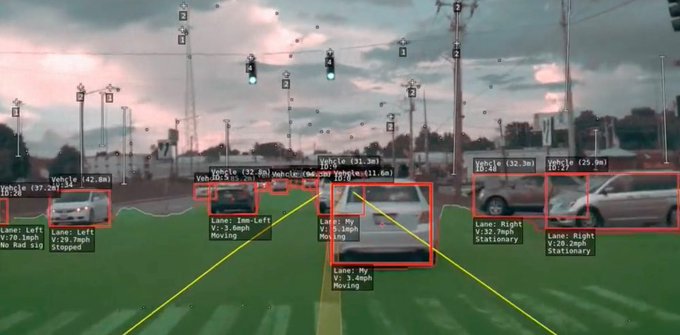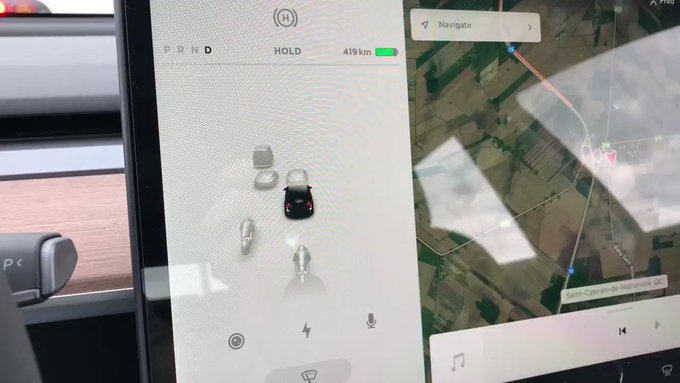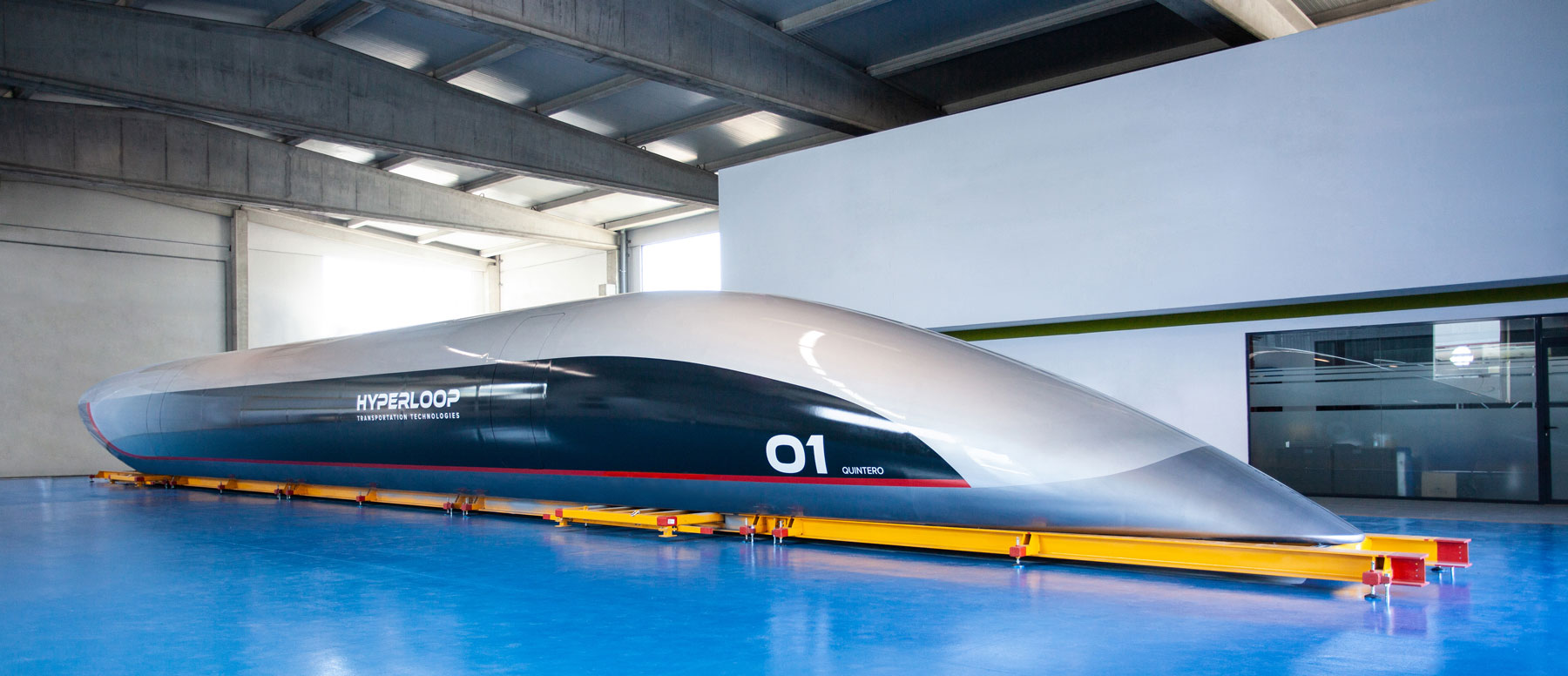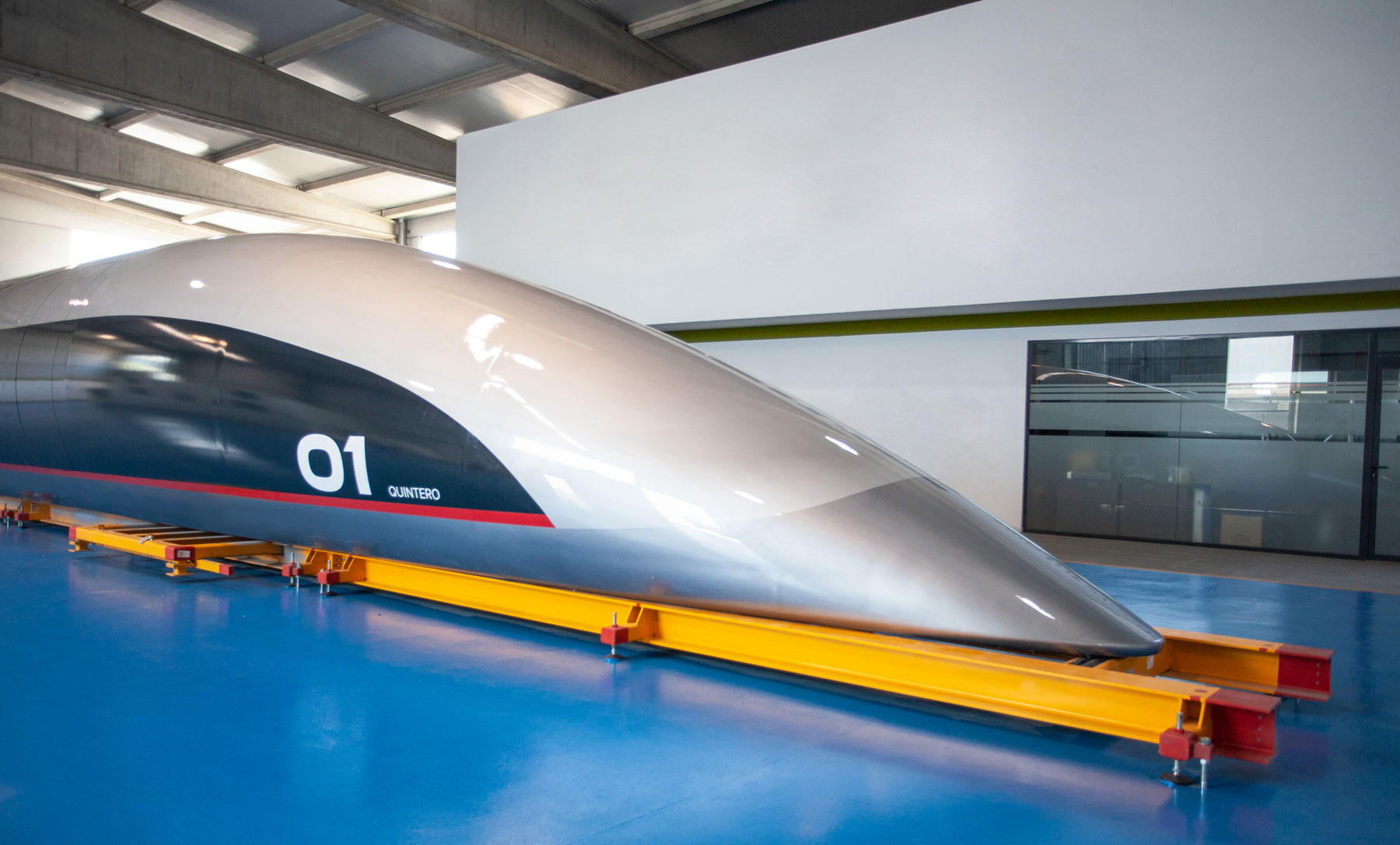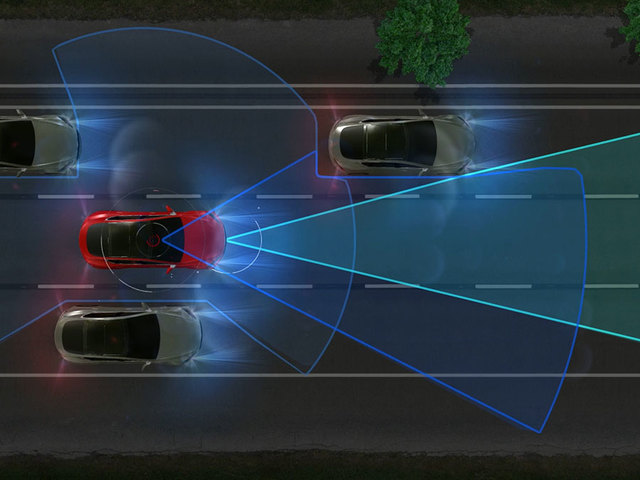A follow-on from my prior blog post: At this point it's probably a good idea to review the various levels of autonomy for self driving vehicles as outlined by the Society of Automotive Engineers (SAE) - 6 levels from 0 to 5:
The Tesla adaptive cruise control is cited as being a level one feature, with the current version of Autopilot being a level two feature - though with future hardware and software upgrades, it appears they hope to achieve at least level 4 self-driving automation. At the moment, it looks like their new AI chip will become available in early 2019.
At the time of my initial testing, the current version of software for the vehicle was 8.1. Of course as soon as I finished the initial testing, version 9 was announced. As I write this version 9 is not only out, but has also been uploaded to my vehicle. However, as I understand it, version 9 does not have any additional Autopilot features enabled for the driver - though some of the advanced features (Navigate on Autopilot) run in 'shadow mode' to help verify that the automation software is performing up to standards, while racking up miles on all of the vehicles that have the software installed. In any case, I'll rerun some of the tests again on version 9 in the future to see if I see any major differences.
For the most part, the adaptive cruise control mode under optimum driving conditions in Ute pass appears to be relatively safe. There are some exceptions though to keep in mind.
Using the cruise control to manage the vehicle's speed and distance from the car in front of in this last few week's testing has so far worked as expected - even bringing the vehicle to a complete stop if needed. Heading down the pass seems to be somewhat better than driving up the pass. As long as the driver is managing the driving and lane changes, it moved down the pass without a hitch. However there was some concern regarding vehicles parked road-side that may need some additional attention. The following three images show a vehicle parked on the shoulder, a truck in the same relative position (though moving, not parked) in a turn lane, and highway patrol with a vehicle pulled over (both parked) on the shoulder. Interestingly, the moving truck was identified as a vehicle and displayed on the screen, though the parked vehicle(s) and the emergency vehicle incident was not.
It's possible (and highly likely) that the automation software did identify these vehicles, but filtered them out of the display. Reviewing other Tesla blogs by users indicates this is a fairly well known issue; though it may be addressed in the update for version 9. In any case I think it would be helpful if the vehicle at least identified them - and if it can highlight the emergency vehicle for the driver (and possible alarm) - that would certainly be a bonus. Additionally, slowing down the vehicle since the officer was outside of his vehicle would have been welcomed behavior as well. Because of the traffic configuration there was no opportunity to move over a lane to provide additional clearance for vehicles or the officer.
On the uphill climb the cruise control did pretty well, even recognizing that it needed to slow down turning into some of the curves, and in some cases accelerating coming out of the curves - which is precisely what an experienced driver on this road would likely do.
The one glitch that made me feel like I needed to temporarily disengage cruise control was when the vehicle accelerated coming around a curve to a hidden stop light. The light has a flashing yellow light ahead of the turn so that drivers know to slow down when the light is flashing. Normally mountain drivers coast at this point till they can see the traffic buildup and the status of the light. Accelerating into the curve seemed hazardous enough that I tapped the brakes to turn the feature off - restarting it once we had passed the light.
Lane changing under Autopilot does not appear to be available on Highway 24 in Ute Pass (though it does under version 9). Information in the operators manual indicates that there are various restrictions (poor visibility, sensor damage, vehicle in your blind spot, etc), one of which is "The road has sharp curves". That may be the most likely reason - but it will need to be addressed to be viable for mountain driving in the future. It's unclear if this will be considered level 5 autonomy or not.
Overall, with close management, the adaptive cruise control was primarily good for this type of mountain driving in optimal conditions (good visibility, clear roads, etc). Autopilot though was not as good or reliable due to the algorithm's focus on keeping the vehicle centered in the lane, and in some cases edging uncomfortably close to the center line at inappropriate times. The unavailability of the lane change function is also a factor in Ute pass, but not the primary concern - Autopilot needs to recognize when it should hedge more toward the center line, or the outside lane line to provide more space between vehicles or in some cases more clearance for roads with steep drop-offs, or to avoid debris. Both features could embrace some idle slowing on blind curves where drivers tend to take their foot off the pedal and let it hover between the brake and the accelerator till what's around the corner becomes clear. V2V (vehicle to vehicle) communication may help with this concern in the future as well, but it will be several years before that additional information will be regularly available.

Additionally, it will be a welcome set of features showing progress toward self-driving autonomy when the vehicle recognizes speed signs and flashing warning lights as well as typical traffic lights parroting them on the driver's screen. This feature will initially help to potentially prevent drivers from inadvertently running lights, but will be a major step forward in providing drivers with confidence in the advancing technology. I would expect this level of automation to be available for the level 4 deployment. Some of the additional mountain driving requirements (such as hedging on narrow roads - especially in snow) may well end up being available only when level 5 autonomy is achieved.
So, it's pretty clear at this point that we're fairly far from reliable self-driving capabilities - and that may be the reason behind Tesla recently removing the 'Full Self-Driving Capability' package from its options due to 'confusion'. This is more of a future upgrade of software and hardware to steadily push the technology closer to level 4 and level 5 over time; not a short term feature. Fans of science fiction might feel like these features are very close to being a reality - when in actuality they are still several years off, with significant amounts of training and development to come.
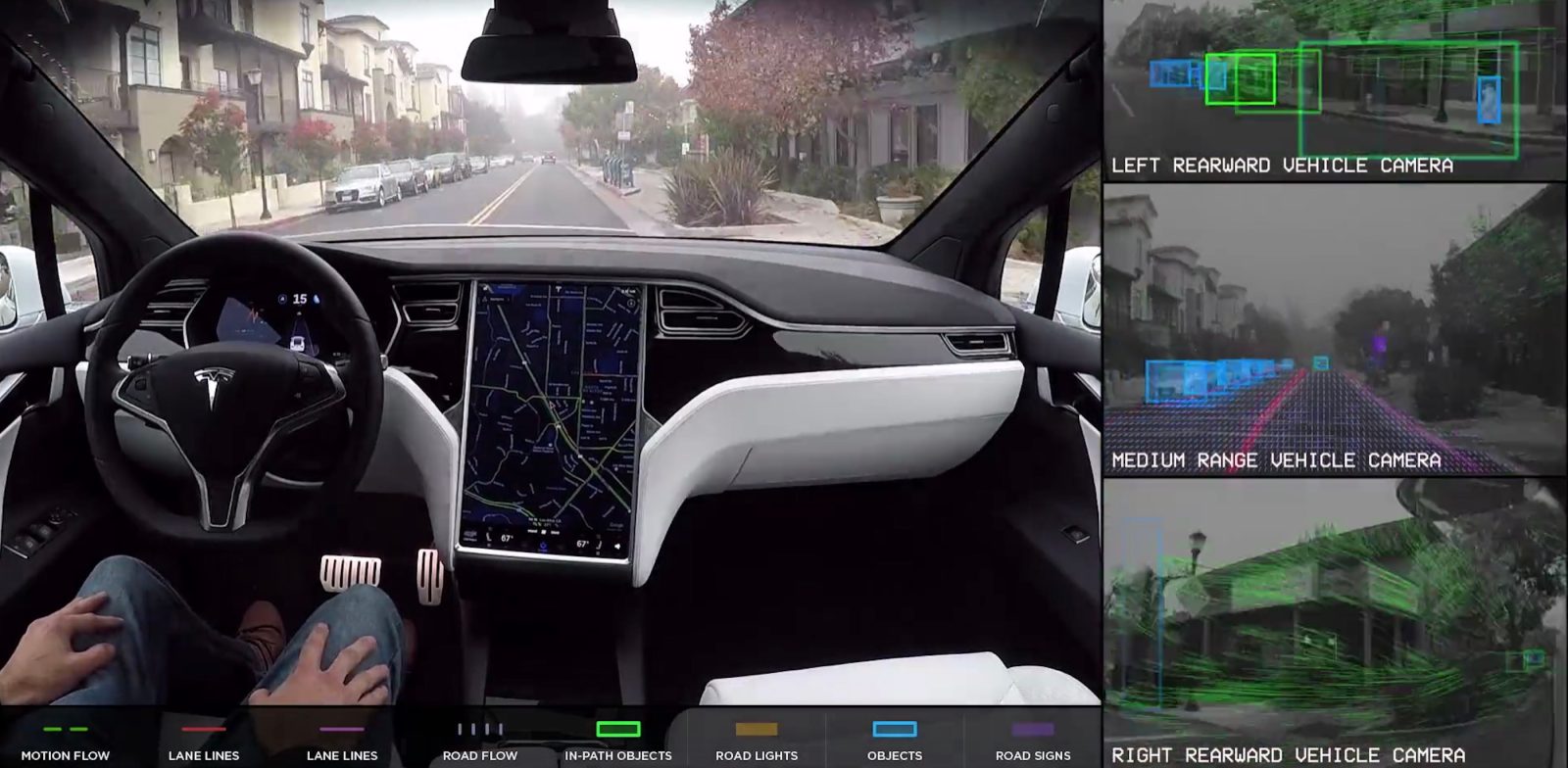
That doesn't mean we should be disappointed though - this technology significantly improves driving safety now. Properly used it will help guard driver's actions while protecting many lives today as well as tomorrow - as long as the driver stays focused and diligent. We must keep patiently waiting for the technology to merge with our expectations.
One of the ways we can help to do that, is to drive and use the technology today; so that it will be ready for everyone in the future.
Next, will be the review of driving the vehicle on Pike's Peak Highway.
The Tesla adaptive cruise control is cited as being a level one feature, with the current version of Autopilot being a level two feature - though with future hardware and software upgrades, it appears they hope to achieve at least level 4 self-driving automation. At the moment, it looks like their new AI chip will become available in early 2019.
At the time of my initial testing, the current version of software for the vehicle was 8.1. Of course as soon as I finished the initial testing, version 9 was announced. As I write this version 9 is not only out, but has also been uploaded to my vehicle. However, as I understand it, version 9 does not have any additional Autopilot features enabled for the driver - though some of the advanced features (Navigate on Autopilot) run in 'shadow mode' to help verify that the automation software is performing up to standards, while racking up miles on all of the vehicles that have the software installed. In any case, I'll rerun some of the tests again on version 9 in the future to see if I see any major differences.
For the most part, the adaptive cruise control mode under optimum driving conditions in Ute pass appears to be relatively safe. There are some exceptions though to keep in mind.
Using the cruise control to manage the vehicle's speed and distance from the car in front of in this last few week's testing has so far worked as expected - even bringing the vehicle to a complete stop if needed. Heading down the pass seems to be somewhat better than driving up the pass. As long as the driver is managing the driving and lane changes, it moved down the pass without a hitch. However there was some concern regarding vehicles parked road-side that may need some additional attention. The following three images show a vehicle parked on the shoulder, a truck in the same relative position (though moving, not parked) in a turn lane, and highway patrol with a vehicle pulled over (both parked) on the shoulder. Interestingly, the moving truck was identified as a vehicle and displayed on the screen, though the parked vehicle(s) and the emergency vehicle incident was not.
 |
| A vehicle on the left exiting the highway is shown on the display ahead, because it is moving. |
 |
| The vehicle on the left does not show up on the display because it is not moving. |
 |
| Neither of these vehicles on the shoulder are displayed to the driver, including the officer standing outside of the vehicles. |
On the uphill climb the cruise control did pretty well, even recognizing that it needed to slow down turning into some of the curves, and in some cases accelerating coming out of the curves - which is precisely what an experienced driver on this road would likely do.
The one glitch that made me feel like I needed to temporarily disengage cruise control was when the vehicle accelerated coming around a curve to a hidden stop light. The light has a flashing yellow light ahead of the turn so that drivers know to slow down when the light is flashing. Normally mountain drivers coast at this point till they can see the traffic buildup and the status of the light. Accelerating into the curve seemed hazardous enough that I tapped the brakes to turn the feature off - restarting it once we had passed the light.
Lane changing under Autopilot does not appear to be available on Highway 24 in Ute Pass (though it does under version 9). Information in the operators manual indicates that there are various restrictions (poor visibility, sensor damage, vehicle in your blind spot, etc), one of which is "The road has sharp curves". That may be the most likely reason - but it will need to be addressed to be viable for mountain driving in the future. It's unclear if this will be considered level 5 autonomy or not.
Overall, with close management, the adaptive cruise control was primarily good for this type of mountain driving in optimal conditions (good visibility, clear roads, etc). Autopilot though was not as good or reliable due to the algorithm's focus on keeping the vehicle centered in the lane, and in some cases edging uncomfortably close to the center line at inappropriate times. The unavailability of the lane change function is also a factor in Ute pass, but not the primary concern - Autopilot needs to recognize when it should hedge more toward the center line, or the outside lane line to provide more space between vehicles or in some cases more clearance for roads with steep drop-offs, or to avoid debris. Both features could embrace some idle slowing on blind curves where drivers tend to take their foot off the pedal and let it hover between the brake and the accelerator till what's around the corner becomes clear. V2V (vehicle to vehicle) communication may help with this concern in the future as well, but it will be several years before that additional information will be regularly available.

Additionally, it will be a welcome set of features showing progress toward self-driving autonomy when the vehicle recognizes speed signs and flashing warning lights as well as typical traffic lights parroting them on the driver's screen. This feature will initially help to potentially prevent drivers from inadvertently running lights, but will be a major step forward in providing drivers with confidence in the advancing technology. I would expect this level of automation to be available for the level 4 deployment. Some of the additional mountain driving requirements (such as hedging on narrow roads - especially in snow) may well end up being available only when level 5 autonomy is achieved.
So, it's pretty clear at this point that we're fairly far from reliable self-driving capabilities - and that may be the reason behind Tesla recently removing the 'Full Self-Driving Capability' package from its options due to 'confusion'. This is more of a future upgrade of software and hardware to steadily push the technology closer to level 4 and level 5 over time; not a short term feature. Fans of science fiction might feel like these features are very close to being a reality - when in actuality they are still several years off, with significant amounts of training and development to come.

That doesn't mean we should be disappointed though - this technology significantly improves driving safety now. Properly used it will help guard driver's actions while protecting many lives today as well as tomorrow - as long as the driver stays focused and diligent. We must keep patiently waiting for the technology to merge with our expectations.
One of the ways we can help to do that, is to drive and use the technology today; so that it will be ready for everyone in the future.
Next, will be the review of driving the vehicle on Pike's Peak Highway.



